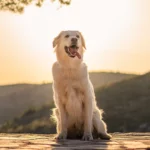Meet the German Shepherd: a loyal, smart dog with a job to do. They started out helping farmers and now they’re known for being great working dogs everywhere—from helping police to assisting people with disabilities.
Why People Love German Shepherds
- They learn fast, which makes them fun to train.
- They’re brave and protective, making great watch dogs.
- They love to stay active, so they’re perfect for people who enjoy being outdoors.
Good to Know
German Shepherds do best with space to run and play. They’re not just a pet; they’re part of your daily life, keeping you company on runs, hikes, or just playing in the yard.
Choosing a German Shepherd means having a faithful friend who’s always ready for the next adventure.
Here’s a detailed datasheet for the German Shepherd breed:
| Category | Detail |
|---|---|
| Breed Name | German Shepherd |
| Origin | Germany, late 19th century |
| Breed Group | Herding (AKC), Working (UKC) |
| Size Classification | Large |
| Weight Range | Males: 65-90 lbs (29-40 kg), Females: 50-70 lbs (22-32 kg) |
| Height Range | Males: 24-26 inches (61-66 cm), Femiles: 22-24 inches (56-61 cm) |
| Life Expectancy | 9-13 years |
| Coat Type | Double coat with a dense outer layer and a soft undercoat |
| Coat Colors and Markings | Most commonly tan/black or red/black, with sable, black, blue, liver, and white variations |
| Grooming Needs | Moderate; regular brushing to manage shedding |
| Shedding | Heavy, especially during seasonal changes |
| Temperament | Intelligent, confident, and courageous |
| Behavioral Tendencies | Protective instincts, strong herding and guarding behaviors |
| Social/Behavioral Traits | Loyal and highly trainable, can be aloof with strangers |
| Activity Level | High; requires regular physical and mental exercise |
| Trainability | Very high; known for their work in police and military roles |
| Intelligence Level | One of the most intelligent dog breeds |
| Barking Tendency | Moderate; tends to bark when necessary or if not properly trained |
| Health Issues | Hip and elbow dysplasia, degenerative myelopathy, and other genetic disorders |
| Dietary Needs | Balanced diet with controlled portions to prevent overfeeding |
| Suitability for | Active individuals, experienced dog owners, families with a yard |
| Breed History | Originally bred for herding, now widely used in work and service roles |
| Exercise Requirements | At least 1-2 hours of active exercise daily |
| Space Requirements | Best with a large yard; not well-suited for small apartments |
| Sleeping Requirements | About 12-14 hours a day, similar to other large breeds |
| Climate Adaptability | Adaptable to both cold and warm climates, but not extreme heat |
| Travel and Relocation Considerations | Generally adaptable but should maintain a routine |
| Compatibility Scorecard | City Living: 2/5, Families: 4/5, Novice Owners: 2/5, Exercise Enthusiasts: 5/5 |
| Ancestry and Bloodlines | Descended from old breeds of herding and farm dogs |
| Notable Traits | Versatile working abilities, distinctive appearance, and noble demeanor |
| Role | Police, military, service, and therapy dogs, as well as family pets |
| Care Requirements | Daily exercise, mental stimulation, and consistent training |
| Cost Breakdown | Food: $40-$80/month, Grooming: $50-$100/visit, Veterinary care: $300-$800/year, Training: $100-$300/course, Insurance: $40-$70/month |
| Training and Socialization | Essential from a young age to ensure well-behaved adulthood |
| Time Commitment | Several hours per day for exercise, training, and companionship |
| Enrichment Activities | Advanced obedience, agility, tracking, herding, or protection sports |
| Common Training Mistakes | Inadequate socialization, negative reinforcement, not enough mental stimulation |
| Seasonal Care | Extra brushing during shedding seasons, protection from extreme temperatures |
| Allergy Considerations | Not hypoallergenic due to heavy shedding |
| Health Screening | Hip and elbow evaluation, genetic testing for breed-specific conditions |
| Insurance Recommendations | Coverage for breed-specific conditions is advisable |
| Mental Stimulation Needs | High; requires tasks that challenge their intelligence |
| Kennel Club Recognitions | AKC, UKC, FCI, and others |
| Breed Standards | Strong, well-muscled body, alert and balanced character, high intelligence and capability |
| Litter Size | 5-10 puppies |
| Level of Protection | High; natural protectors and excellent guard dogs |
| Participation in Dog Sports | Highly successful in a variety of dog sports including Schutzhund, agility, and obedience |
| Noise Level | Can be vocal; known to express themselves with barks, whines, and grunts |
| Odor Level | Moderate; regular grooming and bathing can minimize odor |
| Watchdog/Alarm | Excellent; very alert to their surroundings and protective of their home |
| Therapeutic Use | Commonly used in therapeutic settings for their calm and intelligent nature |
| Cultural Significance | Iconic breed often featured in media and associated with law enforcement |
| Rescue Organizations | German Shepherd Rescue and Adoptions, Save a German Shepherd |
| Certification and Testing | Recommended to have OFA or PennHIP certification for hips, and DNA tests for other inheritable conditions |
| FAQ Section | Q: Are German Shepherds good family dogs? A: Yes, with proper training and socialization. Q: How much grooming do they need? A: Regular brushing, more frequent during shedding season. Q: Can they live in hot climates? A: They can adapt but should be kept cool during extreme heat. |
This table provides a detailed profile of the German Shepherd breed.


